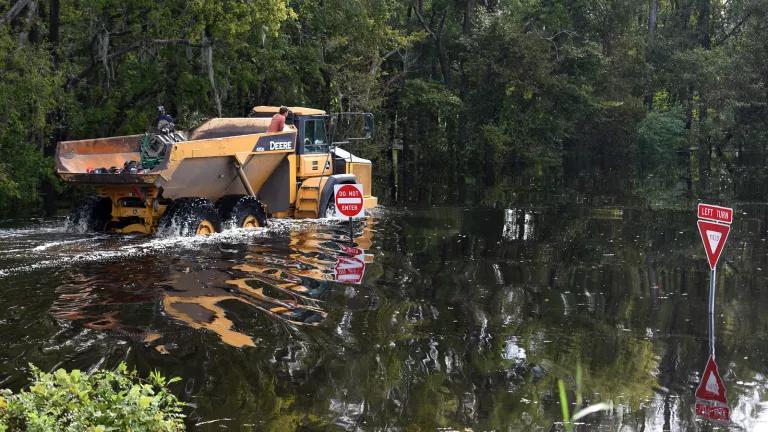Lessons Learned in the Wake of Sandy: Saving Transit Means Taking the High Ground--Literally
As the six month anniversary of Hurricane Sandy rolls by, the passage of time is giving us a clearer picture of what preventive measures really worked. Thanks to an excellent series running this week on WNYC, we can see that New York did a good job of protecting its trains and subways cars while New Jersey didn’t.
The stories, part of WNYC’s Life After Sandy series, detail among other things how New Jersey used incorrect data and maps to determine a safe place to store its trains during the coming storm.
As WNYC’s Kate Hinds and Andrea Bernstein note:
If officials had entered the right numbers, they would have predicted what actually happened: a storm surge that engulfed hundreds of rail cars, some of them brand new, costing over $120 million in damage and thrusting the system’s passengers into months of frustrating delays.
But the fate of NJ Transit’s trains – over a quarter of the agency’s fleet - didn’t just hang on one set of wrong inputs. It followed years of missed warnings, failures to plan, and lack of coordination under Governor Chris Christie, who has expressed ambivalence about preparing for climate change while repeatedly warning New Jerseyans not to underestimate the dangers of severe storms.
The reporters found a tale of two agencies: one in New York that planned well in advance for extreme weather events, and one in New Jersey that didn’t.
The stories are part of a lengthy investigation in partnership with The Record newspaper (Bergen, NJ), and New Jersey Public Radio. Reporters looked at hours of testimony by the (greater New York) Metropolitan Transit Authority and NJ Transit officials, as well as hundreds of pages of internal documents. They also interviewed transit officials and climate and weather experts.
When reporters for WNYC and The Record asked NJ Transit officials for their extreme weather planning documents, they both received the same thing—a three page memo. That memo appeared to be the extent of NJ Transit’s plan, and all but the first page had been blacked out.
NJ Transit’s basic response was that the yard where their trains were stored had never flooded before, and that no one could have predicted the severity of Sandy. That’s not sitting too well with New Jersey Transit riders who endured months of delays in the wake of the storm, and have seen little evidence of a more enlightened approach to extreme weather preparedness.
New York’s MTA, on the other hand, developed detailed plans to prepare for extreme flooding and storm surges. The plans involved moving trains to higher ground and pulling electrical signals from tunnels prone to flooding. Thanks to such measures, the MTA was able to get its systems up and running soon after the storm, and only 19 of its 8,000 rail cars were flooded.
Back in 2008, the agency prepared a forward-looking report and plan: MTA Adaptations to Climate Change--A Categorical Imperative. Among the actions recommended in the plan:
Identify MTA facilities and programs subject to climate risk; Identify main climate change impacts to MTA facilities and programs; Apply future climate change scenarios by time slice; Develop implementation plans, including timeframes for implementation; Monitor and reassess adaptation strategies according to unfolding of climate change and developments in climate science…
You get the point. The MTA’s assessment was part of PlaNYC which represents probably the single best climate preparedness initiative in the United States. Post-Sandy, MTA and New York officials are looking to future impacts and how best to prepare for them.
New Jersey--and other states and cities--should take note.



